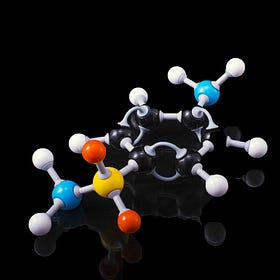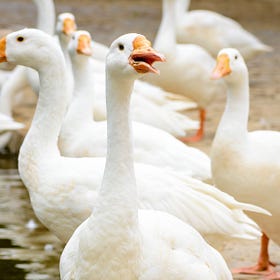Is Sugar Just Another Drug That We Can’t Really Get Rid Of?
After all, the cells in our body do need glucose to survive, no?
Previously, in the field of biochemistry, Sir Hans Adolf Krebs discovered the tricarboxylic acid (TCA) cycle in microorganism cells, which illustrated how molecules of acetyl-coenzyme A (acetyl-CoA) can enter the TCA cycle and be used to generate molecules of reduced nicotinamide adenine dinucleotide (also known as NADH) from oxidised nicotinamide adenine dinucleotide (NAD+).
These NADH molecules would be fed through the electron transport chain and lose some electrons to be cycled back into NAD+. The electron transport through the chain would be facilitated by Coenzyme Q10 (CoQ10) and channelled into a waiting oxygen molecule at the end of the chain to reduce that oxygen molecule into water.
This entire process would generate adenosine triphosphate (ATP), which is an all important molecule for any cellular function that requires the use of energy. ATP is commonly referred to as the “energy currency” of a cell.
So of course, we have to look at where the cell can derive acetyl-CoA from.
Biochemically, acetyl-CoA can be derived from glycolysis (the metabolism of glucose). Of course, we cannot say that dietary glucose (derived from carbohydrates) is the sole source of acetyl-CoA for the cell. Dietary fats and proteins can also contribute acetyl-CoA to the cell.
The problem comes when we are pitched with the idea that carbohydrates are essential for energy generation. After all, we get flooded with carbohydrates in all areas of our diets.
We get pitched the idea that carbohydrate-laden cereals or pastries are “normal” for breakfast.
We get pitched the idea that we need a carbohydrate “staple” for lunch and/or dinner, where we break out the noodles/pasta/breads/rice (dependent on which part of the world we’re in).
Add to that the carbohydrates that we’re consuming from various plants, such as potatoes and other fruits.
And then we have the pudding/ice cream/waffles/cakes for dessert.
We always see them in the various marketing advertisements on different media platforms these days.
It’s a serious carbohydrate overload right there.
But really, do we need that much carbohydrates in our diet?
Because this carbohydrate load on our digestive system can disrupt dopamine levels in our brain and trigger a sugar addiction in due time. It becomes addictive, and various things that disrupt brain dopamine levels are known to be addictive too.
The idea, as always, boils down to a balance.
Because what happened to geese can happen to us. If we’re going to overfeed geese with grains and other assorted carbohydrates to give them fatty livers, from which the French can harvest their delicacy of foie gras (literally meaning “fatty liver” in French), then what are we going to do when we overfeed ourselves with grains and other assorted carbohydrates?
We’d develop fatty livers and get fat too. It’s not rocket science now.
I mean, I wouldn’t want to develop health complications by overfeeding myself with something that I don’t need too much of.
But somehow the most marketed foods that look the most desirable looking always tend to be rich in all these refined carbohydrates, which spells danger to us if we’re not careful!
Do feel free to share this article and hit the “subscribe” button to get more updates about the science concepts in nutrition and health, all deconstructed nicely for your convenient perusal!
What's The Deal With CoQ10 In Our Bodies?
A majority of the human population in today’s modern society is tired and overworked. I feel like that too sometimes - there are all these deadlines at work to meet, mortgages to pay, and the crises that comeseem to be neverending. We almost always feel tired
The Humble Aldehyde Is Something That We Ought To Be Very Wary Of When Consuming Processed Foods.
It’s quite interesting to note these days what we can eat and what we shouldn’t be eating. Even if the food product is actually edible… the metabolites may not be regarded as safe. We know a few things about what not to consume in overly large quantities. Sugar, we know, isn’t that great. Alcohol, we know that we shouldn’t be drinking too much of. Polyunsaturated fats (or even partially hydrogenated fats) aren’t that great either.
The Addiction Behind Achieving The Next Dopamine Release.
The idea behind a reward system is tied to the release of the neurotransmitter dopamine (DA) in our brains. As it is said in this research article about DA, However, it has been demonstrated that DA is involved in the hedonic component of reward. Several lines of evidence show that the receipt of rewards evokes an increase in DA activity; however numerou…
How We Can End Up Overfeeding Ourselves Into Fatty Livers — And The Underlying Factors At Play.
There are many delicacies around the world that do cater to the well-heeled clientele. Yes, those with money. Because it does look like one can get away with more shenanigans when they have more money. In France, we do see how geese are bred for the purpose of killing them and extracting their fatty livers — which are more commonly known as








